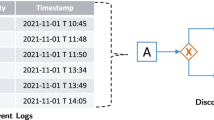Abstract
Defects in safety critical processes can lead to accidents that result in harm to people or damage to property. Therefore, it is important to find ways to detect and remove defects from such processes. Earlier work has shown that Fault Tree Analysis (FTA) [3] can be effective in detecting safety critical process defects. Unfortunately, it is difficult to build a comprehensive set of Fault Trees for a complex process, especially if this process is not completely well-defined. The Little-JIL process definition language has been shown to be effective for defining complex processes clearly and precisely at whatever level of granularity is desired [1]. In this work, we present an algorithm for generating Fault Trees from Little-JIL process definitions. We demonstrate the value of this work by showing how FTA can identify safety defects in the process from which the Fault Trees were automatically derived.
Preview
Unable to display preview. Download preview PDF.
Similar content being viewed by others
References
Clarke, L.A., Chen, Y., Avrunin, G.S., Chen, B., Cobleigh, R.L., Frederick, K., Henneman, E.A., Osterweil, L.J.: Process Programming to Support Medical Safety: A Case Study on Blood Transfusion. In: Li, M., Boehm, B., Osterweil, L.J. (eds.) SPW 2005. LNCS, vol. 3840, Springer, Heidelberg (2006)
Leveson, N.G.: Safeware: System Safety and Computers. Addison-Wesley, Reading (1995)
Vesely, W.E., Goldberg, F.F., Roberts, N.H., Haasl, D.F.: Fault-Tree Handbook, Reg. 0492. US Nuclear Regulatory Comm., Washington (1981)
Vesely, W.E., et al.: Fault Tree Handbook with Aerospace Applications. NASA (2002)
Wise, A.: Little-JIL 1.0 Language Report. Technical report (UM-CS-1998-024), Department of Computer Science, University of Massachusetts, Amherst, MA (1998)
Cha, S.S., Leveson, N.G., Shimeall, T.J.: Safety Verification in Murphy Using Fault Tree Analysis. In: ICSE 1988: Proceedings of the 10th International Conference on Software Engineering, Singapore, pp. 377–386 (1988)
Ratan, V., Partridge, K., Reese, J., Leveson N.G.: Safety Analysis Tools for Requirements Specifications, http://www.safeware-eng.com/index.php/publications/SafAnTooReq
Pai, G.J., Dugan, J.B.: Automatic Synthesis of Dynamic Fault Trees from UML System Models. In: 13th International Symposium on Software Reliability Engineering (ISSRE 2002), p. 243 (2002)
McKelvin Jr., M.L., Eirea, G., Pinello, C., Kanajan, S., Sangiovanni-Vincentelli, A.: A Formal Approach to Fault Tree Synthesis for the Analysis of Distributed Fault Tolerant Systems. In: Procs. of the 5th ACM International Conference on Embedded Software, pp. 237–246 (2005)
Liggesmeyer, P., Rothfelder, M.: Improving System Reliability with Automatic Fault Tree Generation. In: FTCS 1998: Proceedings of the The Twenty-Eighth Annual International Symposium on Fault-Tolerant Computing, p. 90 (1998)
Bozzano, M., Villafiorita, A.: Improving System Reliability via Model Checking: the FSAP / NuSMV-SA Safety Analysis Platform. In: Anderson, S., Felici, M., Littlewood, B. (eds.) SAFECOMP 2003. LNCS, vol. 2788, pp. 49–62. Springer, Heidelberg (2003)
Author information
Authors and Affiliations
Editor information
Editors and Affiliations
Rights and permissions
Copyright information
© 2006 Springer-Verlag Berlin Heidelberg
About this paper
Cite this paper
Chen, B., Avrunin, G.S., Clarke, L.A., Osterweil, L.J. (2006). Automatic Fault Tree Derivation from Little-JIL Process Definitions. In: Wang, Q., Pfahl, D., Raffo, D.M., Wernick, P. (eds) Software Process Change. SPW 2006. Lecture Notes in Computer Science, vol 3966. Springer, Berlin, Heidelberg. https://doi.org/10.1007/11754305_17
Download citation
DOI: https://doi.org/10.1007/11754305_17
Publisher Name: Springer, Berlin, Heidelberg
Print ISBN: 978-3-540-34199-4
Online ISBN: 978-3-540-34201-4
eBook Packages: Computer ScienceComputer Science (R0)




